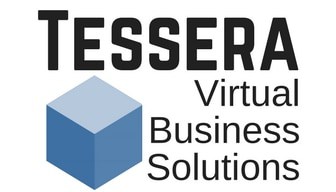How much time in your workday do you spend getting set up to actually do the projects you were hired to do? We call this work about work. Perhaps you have to find information in emails, locate documents in Google Drive or search for a Slack message with a tidbit of information communicated to you.
The Problem
According to Asana’s Anatomy of Work Index, 60% of a person’s time at the office is spent on work about work and not on the actual skilled work that produces results in a business. That is an amazingly high percentage.
Can you imagine what might happen to the bottom line of a business if this amount could be lowered? Profits will surely rise when inefficiency is reduced.
The Solution
The simple solution for reducing work about work is to make sure all the information needed to complete a project is in one place. A place to manage all your tasks and projects without jumping from one platform to the next, wondering where that last piece of information landed.
For me that place is the work management platform, Asana. And with just 3 simple strategies for using Asana, you and your team can reduce the frustration and the waste that comes when you spend too much time pulling work from many sources.
Be Transparent With Work Projects
When creating a project in Asana, it is important for all stakeholders to be able to see the project’s status easily. Make the project public to the team so that it can be found easily. Or, if this is not possible, invite stakeholders as collaborators on the project. This will give them updates automatically in their Asana Inbox.
Team members that are collaborators on the project should agree to check their Asana Inbox 2-3 times daily to stay up-to-date on all comments, questions, and completed tasks within a project. If there is a question on the progress, all team members should first check the project tasks and comments first before asking fellow team members for a status. If all are working well in Asana, the information should be a click away for all.
Communicate Within the Project
The second strategy to use is Asana projects to communicate about that project. This eliminates the need to send extra emails or Slack messages to give or get information. It also provides a great historical reference for all collaborators. In one visit to the project in Asana, you can see what has been done, who is doing it, what’s up next, and the deadlines that are coming up.
If you need to ask a question to a specific person, simply @mention his or her name. You can even @mention other tasks and other projects for quick reference for all. If all parties are using the first strategy and checking their Asana Inbox 2-3 times daily, they will see your @mention and be able to answer right on the project, giving others the answer as well.
As the project moves toward completion, there will inevitably be times that other tasks should be added to reach the project goal. This is a simple thing to do, and it is important to note that tasks can be assigned to yourself, laterally to peers, up to managers or down to direct reports. Once a task is assigned, give it a a due date to reduce confusion. Remember to over-communicate for best results.
Collaborate With Assets Attached to the Project
The final strategy for using Asana to reduce work about work is perhaps my favorite because it is the biggest time saver.
Most projects will have components that are larger than a simple description on the Asana task. There is a good chance that projects and tasks have files needed to get the job done.
Each project in Asana has a tab called “Overview” where files directly related to that project can be uploaded and easily accessed by all collaborators. You also have the ability to add files to particular tasks within the project or provide direct links to cloud storage files like Google Drive.
So the graphics, email templates, or spreadsheets you need to get the job done live on the project. No need to go looking for these documents. This is HUGE!
Are You Ready To Reduce Work About Work?
If you are ready to reduce inefficient practices in your daily routines and lessen time spent on work about work, then now is the time. We are ready to set you up for success by diagnosing, designing, and deploying an Asana plan for you and your team, contact us today. You will recoup your investment in time saved for each team member. It won’t take long to see the difference!


